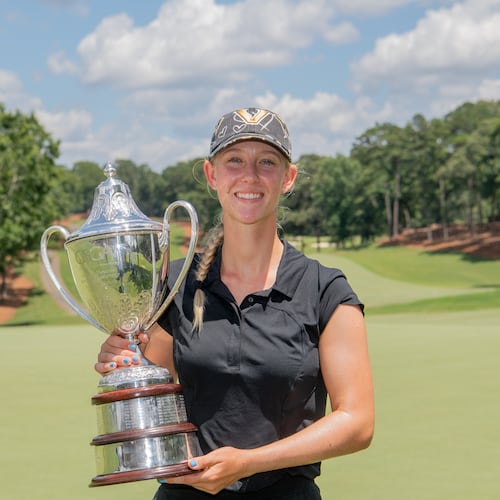Georgia Tech forward Gani Lawal had two months to decide whether to leave school early for the NBA last spring. If he were facing that decision at the end of this season, he would have closer to two weeks.
The NCAA changed the deadline this year. Underclassmen will have until May 8 to withdraw from the NBA draft without losing their eligibility, five weeks earlier than last year's June 15 deadline.
For a player such as Lawal, who spent more than two weeks in late May and early June traveling to NBA cities for workouts and the pre-draft combine before deciding to stay at Tech, it would eliminate much of the face-to-face feedback he found so valuable in making his decision.
"It helped me," Lawal said. "I used it for what it's put in place for. That's why I don't agree with the new rule."
Neither does Maryland senior Greivis Vazquez, who waited until June 15 before withdrawing from the 2009 draft.
"Now you're not going to have time to work out with teams," Vazquez said. "Now you're really going to have to stay in or stay out."
Players have until late April to declare for the 2010 NBA draft (which is scheduled for June 24), and workouts don't typically begin until four or five days after the NBA compiles a list of those entrants. That could leave as little as a week for workouts at a time when college players are often trying to finish their exams.
"It's going to be a lot more on the player who's trying to make that decision," Virginia Tech junior guard Malcolm Delaney said. "It'll be very tough."
Moving the deadline was intended to help college coaches, who sit in limbo for months not knowing whether they'll need to recruit a player to replace one leaving early for the NBA. But the May 8 deadline falls late in the spring signing period, which runs from April 14-May 19 in 2010.
The ACC proposed pushing the deadline up to mid-April, before the start of the spring signing period. The NCAA's choice of May 8 was seen as a compromise.
"We were pleased with that progress," ACC commissioner John Swofford said. "We felt like it was a reasonable middle ground, and it was helpful compared to where it was."
Georgia Tech coach Paul Hewitt isn't sure who it helps.
"I'm not sure what we accomplished because you put the kids [leaving] in a difficult position, and then I as a coach don't get a chance to replace him because by May 8 the signing period is three weeks old," Hewitt said.
Hewitt acknowledged there are exceptions such as John Wall, who waited until May 15 to sign his letter-of-intent with Kentucky.
North Carolina coach Roy Williams doesn't think players need nearly that long to decide.
"There's no reason in the world it would take two months to decide what you're going to do," Williams said. "Make a decision to get married, or don't make a decision to get married. It's that kind of thing."
He points out that college football players have only 72 hours to withdraw from the NFL draft. Baseball players are allowed help from an unpaid advisor, who often becomes their agent if they enter the Major League Baseball draft.
"I'm not saying anything is perfect, but it's a lot better than what we had," Williams said of the change.
He agrees with Hewitt that coaches are still in a bind with recruiting, but he still likes the new date.
"It has no effect on us except coaches sleep at night," Williams said. "We can't get a new player on May 9 any more than we can get a new player on June 16. ... But it's better because it's right."
The net effect of the change could be to deter players from entering the draft. That wouldn't be a bad thing from the perspective of college coaches such as Jeff Lebo of Auburn, who thinks too many players are leaving college early.
"It's become kind of a fad to enter," Lebo said. "If you don't, it's not cool. It's like you're saying ‘I can't play,' especially when you're a junior because there's no downside. It is a little bit of a risk if you do it as a freshman or sophomore because you can only do it once. But you get your name on ESPN, you get some marketing things, you get some attention. It's odd because you look at the number of people who put their names in, and there are only so many slots. You go wow, what is this kid thinking about?"
Maryland coach Gary Williams thinks forcing a college player to make a fast decision might backfire, and that player will stay in the draft pool thinking he can make it in the NBA, when he can't.
"I want a guy to be able to make a good decision," he said.
As it is, players worry the rule change would force them to miss workouts with individual NBA teams and the pre-draft combine in late May. The NBA seems willing to try to accommodate players, given the changes. When the May 8 deadline was announced in April, Division I president David Berst said the NBA had agreed to move up dates of individual workouts.
Even so, Hawks assistant general manager David Pendergraft thinks individual workouts aren't as important as evaluating players in their college games anyway.
"Shoot, 75 percent of your scouting for all intents and purposes is done [by May 8]," Pendergraft said. "I don't think it's going to make that much of a difference."
Hawks director of basketball operations Mike McNeive said there were two to three weeks of dead time as it was. That allowed more time for players to be influenced by outside sources such as agents, he said.
"This gives more clarity to the situation, takes control from some people who maybe don't necessarily have the best interests of the players in mind," McNeive said. "[Such as an] agent, family, friends, teammates. To me it doesn't make any sense why it's that long anyhow. ...
Anything they can do to move it up, I'm all for it," McNeive said. "I'd rather have them tell me ‘These are the guys in the draft.' Let's go with it."
Staff writer Ken Sugiura contributed to this article.
About the Author
Keep Reading
The Latest
Featured

